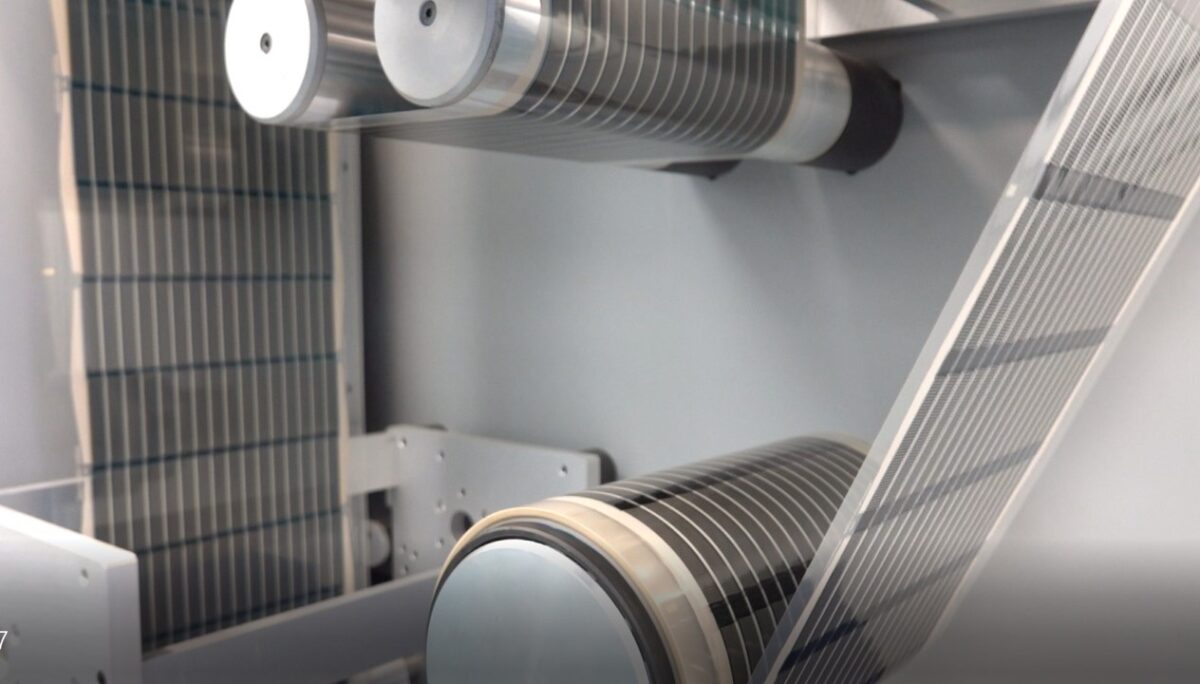Denmark's InfinityPV, has unveiled a new light (or laser) beam induced current (LBIC) system, dubbed Antikythera, which is able to rapidly scan thin film solar foil to detect defects as foils wind off and onto roll-to-roll (R2R) spindles.
The new system relies on laser technology that supports pixel sizes from 100 µm to 40 µm, with a processing speed of up 90 µm/min. The foil length is “unlimited”, with foil widths of 350 to 2100 mm being supported, and standard widths of 350 mm, 700 mm, 1050 mm.
“One challenge for printed solar foil is that when endless rolls of solar cells are made the manufacturer does not immediately know whether or not the solar cells embedded on the roll are working,” the company's CEO, Frederik C. Krebs, told pv magazine, noting that the system’s software automatically locates the solar cells, identifies, and quantifies defects. “With our non-destructive system, the user can stop work on defective, faulty, or below spec devices, conserving resources and avoiding wasted material.”
The Antikythera system can be installed with other InfinityPV products, such as its laboratory roll to roll coater system (LR2RC), or its slot-die coating component. It can also be retrofitted into an existing line. It requires a 110-240 VAC line voltage source and can be installed above or below the moving web, according to the company.
The equipment’s footprint is dependent on the foil size. “A general rule is that the installation volume is around 1.5 times the foil width cubed,” said Krebs.
The Danish company has an existing LBIC product for analysis of sheet-based thin film PV, and customers for the R2R-based systems.
“Currently two such systems are in operation in the world. We anticipate that as the printed solar industry grows this will become paramount for the success of this industry including perovskite, organic, kesterite, CIGS and amorphous silicon,” said Krebs.
The equipment provider sells the R2R systems not only to PV manufacturers but also to manufacturers of other thin film products in the battery, fuel cell and medical device industries.
The product development was supported by European Commission through the Clean4yield project headed by TNO (Project No.: 281027) and the RealNano project headed by Aristotelio Panepistimio Thessalonikis (Project No.: 862442).

infinityPV
This content is protected by copyright and may not be reused. If you want to cooperate with us and would like to reuse some of our content, please contact: editors@pv-magazine.com.



By submitting this form you agree to pv magazine using your data for the purposes of publishing your comment.
Your personal data will only be disclosed or otherwise transmitted to third parties for the purposes of spam filtering or if this is necessary for technical maintenance of the website. Any other transfer to third parties will not take place unless this is justified on the basis of applicable data protection regulations or if pv magazine is legally obliged to do so.
You may revoke this consent at any time with effect for the future, in which case your personal data will be deleted immediately. Otherwise, your data will be deleted if pv magazine has processed your request or the purpose of data storage is fulfilled.
Further information on data privacy can be found in our Data Protection Policy.